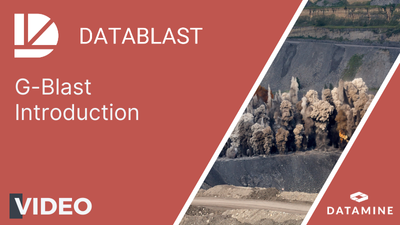G-Blast Charge Standards
This video, recorded using an earlier version of DataBlast Pro, provides an introduction to G-Blast.
G-Blast charge standards use multiple components (each of which is like a conventional charge standard) applied above, below and between defined strata to create a detailed charge design. This level of complexity is required for 'through-seam' blasting.
Although originally designed to manage charge around soft and hard horizons, G-Blast has also been used for baby decking, blasting toward voids and controlling differential movement.
To use G-Blast, you need to:
- Define the geological strata with point clouds and wireline data. DataBlast Ignite does not limit the number of strata in a G-Blast charge standard.
- Create G-Blast components to define how the charge is placed above and below (and perhaps between) the strata. See Maintain G-Blast Components.
- Create a G-Blast charge standard to define the combination of G-Blast components. See Maintain G-Blast Charge Standards.
- Apply the G-Blast charge standard to a charge pattern.
Note: Editing a G-Blast component does not affect existing G-Blast charge standards that already use that component. The G-Blast charge standard retains an historical copy of the components. To use an updated component, you must reselect it in the G-Blast charge standard configuration. (The same logic applies for the conventional charge standard specified for use when there are no strata intersections.)
The following diagram illustrates a G-Blast charge design with two strata.
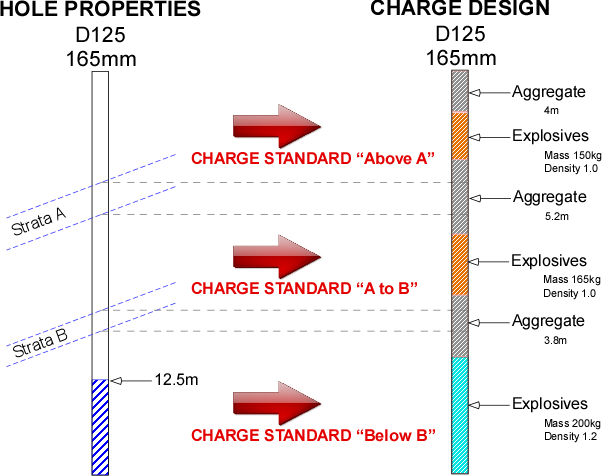
The G-Blast charge standard is only a representation of the charge placement. The actual charge placement is defined by the depth of burial of the roof and the height of the floor above grade as determined by the specific intercepts of the strata with each drill hole. The G-Blast model calculates the design charge for each measured hole with strata intercepts. This results in a consistent charge arrangement irrespective of actual hole depths and strata location and thickness.
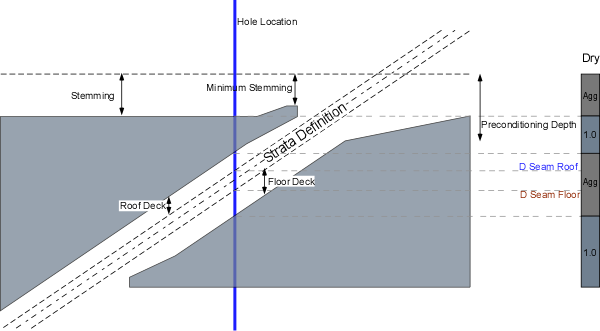
Above-Strata G-Blast Components
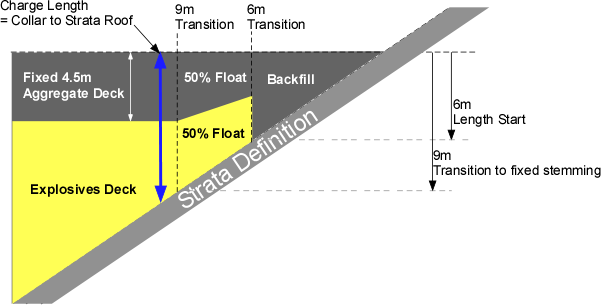
When you create an above-strata G-Blast component, you need to specify the following dimensions:
- Stemming
- Minimum Stemming
- Roof Deck
- Minimum Roof Deck
- Minimum Explosive Deck
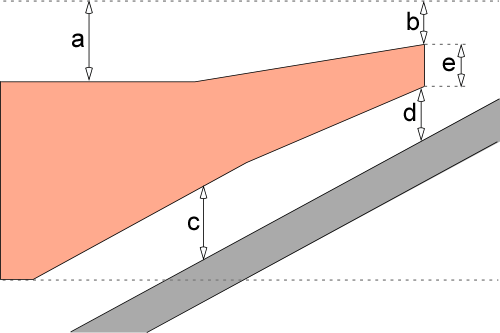
Below-Strata G-Blast Components
Preconditioning is additional stemming that can prevent disruption of material where a soft strata daylights.
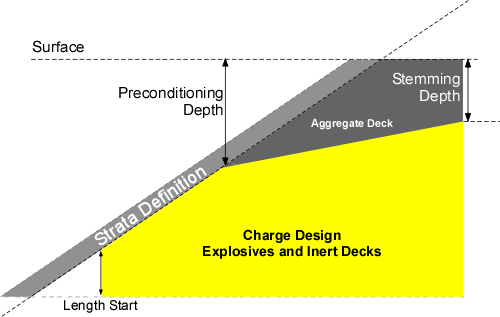
When you create an below-strata G-Blast component, you need to specify the following dimensions:
- Minimum Explosive Deck
- Minimum Floor Deck
- Floor Deck
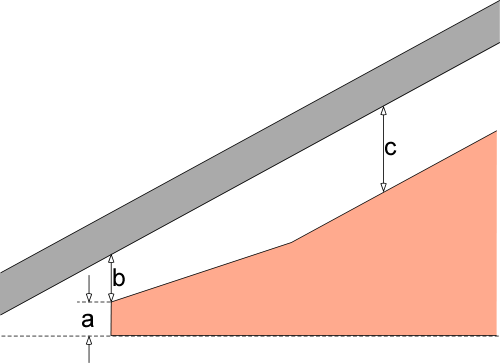
Between-Strata G-Blast Components
When you create an between-strata G-Blast component, you need to specify the following dimensions:
- Minimum Explosive Deck
- Minimum Floor Deck
- Fixed Floor Deck
- Fixed Roof Deck


